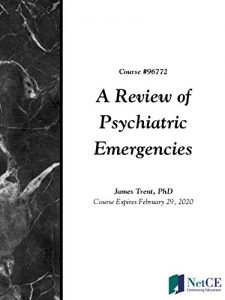This course provides a comprehensive review of the pathogenesis, clinical expression, diagnosis, and management of multiple sclerosis. The purpose of this course is to address potential gaps in knowledge of pathogenesis and natural history of the disease and to enhance clinical skill in evaluation, diagnosis, and patient care. Clinical care topics include treatment of acute exacerbations, therapeutic options for disease modification, and management of common symptoms and complications. The over-arching purpose is to improve quality of care and treatment outcomes for patients with multiple sclerosis. In addition, members of the public may use this course to enhance their personal knowledge of the subject matter presented.
Upon completion of this course, you should be able to:
1. Describe the risk factors for multiple sclerosis (MS).
2. Define the etiology and pathophysiology of MS.
3. Identify common signs and symptoms of MS.
4. Distinguish between the various MS disease courses, including relapsing-remitting, primary progressive, and secondary progressive subtypes.
5. Compare and contrast early-onset and late-onset MS.
6. Identify and describe the effectiveness of the diagnostic tests and criteria used to diagnose MS.
7. Assess the conditions that should be considered in the differential diagnosis of MS.
8. Evaluate the various treatment options of acute exacerbations of MS crisis episodes with regard to indication, efficacy, and adverse effects.
9. Evaluate the disease-modifying drugs used in the treatment of MS with regard to efficacy and adverse effects.
10. Discuss options for managing the symptoms of MS.
11. Determine possible treatment options in pregnant patients with MS.
This 10-hour continuing education course is available for download for professional development; if continuing education credit is desired, please see instructions included in eBook.
Upon completion of this course, you should be able to:
1. Describe the risk factors for multiple sclerosis (MS).
2. Define the etiology and pathophysiology of MS.
3. Identify common signs and symptoms of MS.
4. Distinguish between the various MS disease courses, including relapsing-remitting, primary progressive, and secondary progressive subtypes.
5. Compare and contrast early-onset and late-onset MS.
6. Identify and describe the effectiveness of the diagnostic tests and criteria used to diagnose MS.
7. Assess the conditions that should be considered in the differential diagnosis of MS.
8. Evaluate the various treatment options of acute exacerbations of MS crisis episodes with regard to indication, efficacy, and adverse effects.
9. Evaluate the disease-modifying drugs used in the treatment of MS with regard to efficacy and adverse effects.
10. Discuss options for managing the symptoms of MS.
11. Determine possible treatment options in pregnant patients with MS.
This 10-hour continuing education course is available for download for professional development; if continuing education credit is desired, please see instructions included in eBook.












